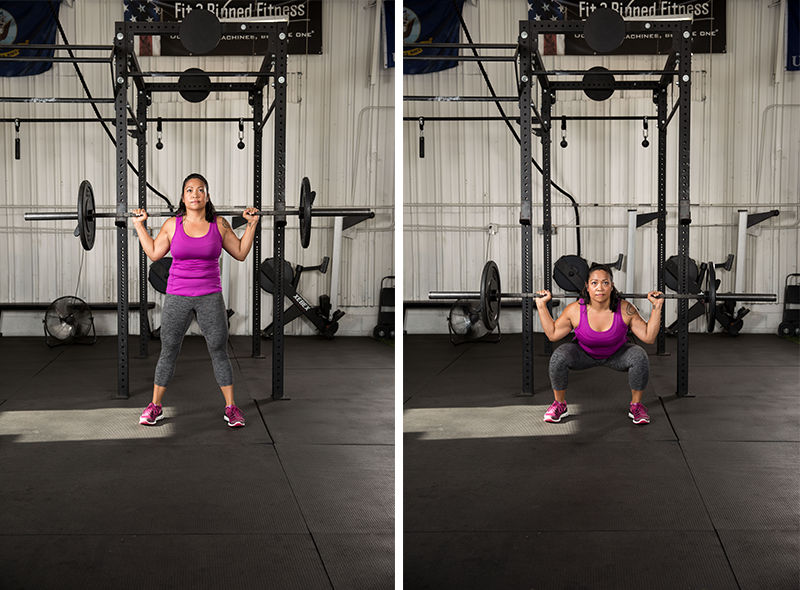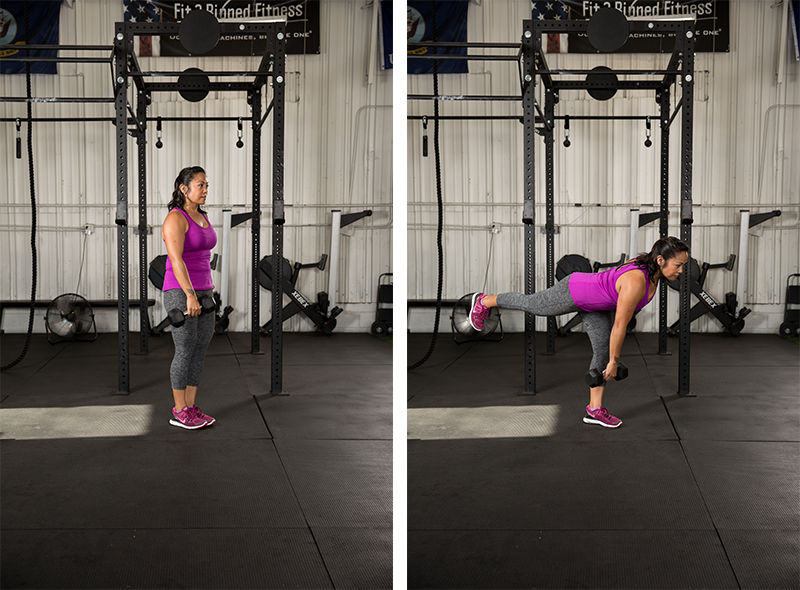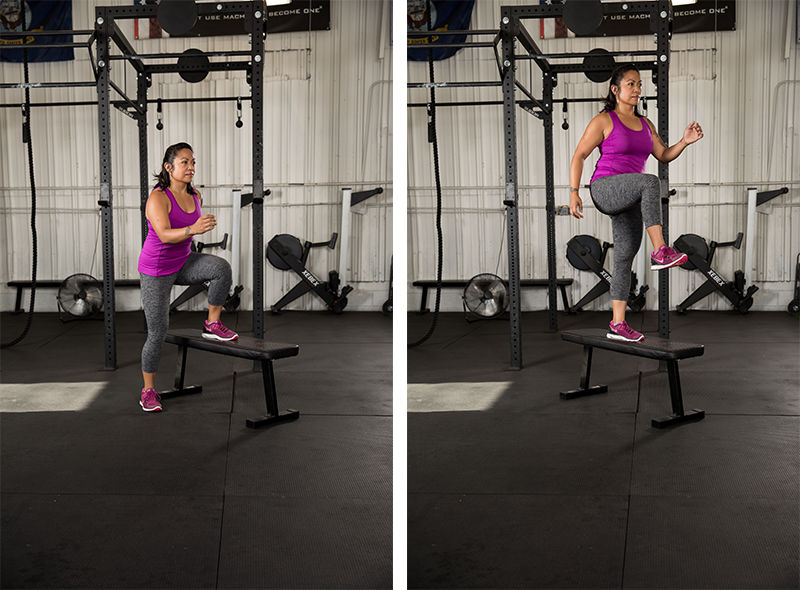Your legs can do amazing things, including run, jump, kick, dodge, step, pivot, accelerate, leap, balance and turn, just to name a few. Plus, the lower body needs to move in every possible direction at slow, medium and explosive speeds. That’s why you need to make sure your clients are training their legs in a variety of ways. While there are hundreds of great lower-body strength-training options, these five movements are particularly effective for developing optimal leg strength for any sport or life activities your clients may pursue.
Barbell Squat
Without question, squats are the gold standard when it comes to lower-body exercises—and for good reason. The triple flexion and extension at the hips, knees and ankles promotes mobility, while building strength throughout the legs.
How to: Rest the barbell at the base of the neck across the top of the traps. With the feet slightly wider than hip-width apart, lower the hips down and back, keeping the back and shin angles parallel to one another. Choose a depth that is safe for the knees and hips, yet still challenging (this will vary from person to person). Engage the glutes and drive up from the floor.
Options: Perform body-weight squats or unloaded squats with a suspension trainer.
Tips: If your client does not have knee pain or issues, select a weight that will permit the hips to drop as low as possible without breaking form. This will maximize glute engagement.

Single-leg Romanian Dead Lift
This exercise targets balance and bilateral imbalances, improves hip mobility, and strengthens the glutes and hamstrings.
How to: Begin by holding a dumbbell in the opposite hand of the planted foot. Keeping a neutral spine and only a slight bend in the planted leg, hinge forward, keeping square with the floor. Once the end range of a flat torso is reached (the body should form a capital T if mobility allows), lower that leg back to the floor.
Options: If your client is struggling with perfect form, ditch the weight and first master the hip hinge.
Tips: Care should be taken to ensure a neutral spine throughout the entire movement. Forward flexion will not only take away from the exercise, but will also put excessive strain on the lumbar spine.

TRX Lunge With Rotation
This challenging, yet fun exercise targets balance, coordination, hip mobility and, of course, strength.
How To: Adjust the straps to mid-calf length. Stand facing away from the anchor point and place the right foot in the foot cradles. Hold a weight tight to the chest with both hands and lower the back knee straight down to the floor. Extend the arms and, while maintaining stability, rotate over the front leg. Return the weight to the chest and return to a standing position.
Options: This lunge can be performed away from the suspension trainer for more stability, or without weight for less resistance.
Tips: When lunging in the suspension trainer, ensure the back knee lowers about 2 inches off of the floor and about one foot behind the front heel.

Side Step-ups
Although we frequently move laterally during real-life activities, too many exercises only focus on forward or linear motion. This exercise is an exception.
How to: Select a step height at which the knee is 90 degrees when the foot is placed upon it. With the right foot centered on the step, press downward into the full foot. Engaging the muscles of the right hip, drive the left knee up. Slowly lower down with a soft landing and repeat.
Options: The step can be lowered to decrease the intensity; conversely, dumbbells or a weight vest can be added to increase the load.
Tips: To emphasize the gluteus medius, ensure your client is actually stepping to the side while lowering down and up.
Hill Sprints
Although hill sprints are not typically considered a resistance-training exercise, they are effective for building leg strength and power. Nothing increases the power and efficiency of an individual’s running stride like dashing up hills.
How to: Select a fairly steep hill and complete four to six sets of 10- to 20-second sprints followed by a three-minute recovery.
Options: While some clients may prefer to run longer hills at a lower grade (5-7%) others will prefer to challenge their power with steeper hills and shorter sprints.
Tips: Running uphill forces the knees to lift higher, so focus on knee and arm drive while powering up the hill.
Deliver the individualized programs people need to adopt long-term, healthy behaviors with ACE’s Personal Trainer Certification.




 by
by 








 by
by